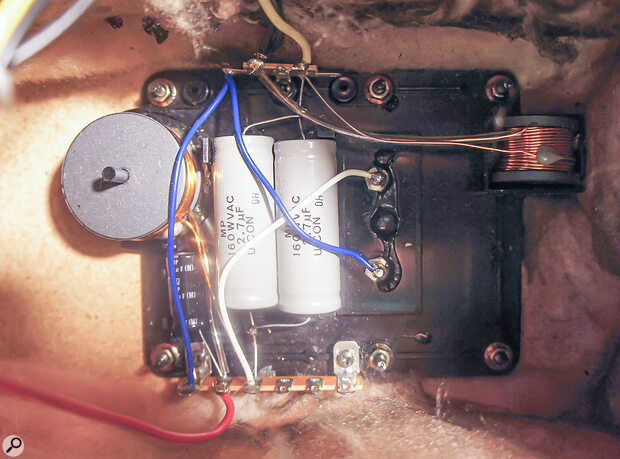 Passive speakers are so called because of the passive crossovers that are employed to split and route the incoming high‑level (amplified) signal so it can move the different drivers.
Passive speakers are so called because of the passive crossovers that are employed to split and route the incoming high‑level (amplified) signal so it can move the different drivers.
I was asking for advice on a well‑known hi‑fi forum and encountered a widely prevailing view that passive speakers are superior to active systems — in some opinions, vastly superior. I think the belief is partly about the benefit of a separate power amp, which will be ‘cleaner’ or do a better job than an amp integrated into the speaker itself. Is this true — are passive systems better than active ones, and does this apply to studio monitors as well as the hi‑fi world?
SOS Forum post
SOS Technical Editor Hugh Robjohns replies: Yes and no! The problem in answering this thorny question is that it all depends on the quality of the speaker design and, to a large degree, its price. Ultimately, a well‑designed active speaker is capable of achieving a far higher standard of accuracy and fidelity than any passive system, and that’s why most professional recording studios and high‑end mastering suites now employ active full‑range monitor systems. However, I doubt the correspondents on that hi‑fi forum have ever heard such systems, which typically will cost well north of £25k (circa $35k).
More likely, their views are based on comparing very good passive speakers driven by well‑made amps with budget active monitors, where so often at the lower end of the studio active‑monitor market the active idea is employed for convenience rather than fidelity. A good‑quality, standalone, discrete amplifier will always outperform the ‘chip amps’ that are often built into budget active studio monitors, but high‑end active systems use the same calibre of amplifier designs favoured in the hi‑fi world.
The main limitation of a passive loudspeaker is that the crossover circuitry that splits the audio spectrum to feed the various loudspeakers has to operate at very high power levels and low impedances, with entirely passive components which are large, expensive and tend to interact in unhelpful ways. This all restricts what can be done in terms of phase and amplitude response accuracy. An active system moves the crossover ahead of the power amplifiers so it works at line level with active electronics, and this allows far greater phase and amplitude accuracy, as well as steeper slopes and far better matching between drive units. It also allows for time alignment, and bespoke protection tailored precisely for each individual drive unit. Some recent systems also now use DSP to compensate for inherent foibles in drive units, and even to correct for room acoustic anomalies, which can never be achieved with passive crossovers.
Active systems also ‘win’ because connecting a separate power amp directly to each drive unit affords much tighter control of the drive unit’s movements and avoids any possibility of intermodulation, which can be a significant issue in passive designs. (It’s probably worth noting that not all speakers with built‑in amps are genuinely ‘active’: some are simply passive speakers with a power amp built into the cabinet, and while these have the ‘all‑in‑one’ convenience of an active design, they offer none of that format’s other benefits.)
At the budget end of the scale, a good passive speaker with a decent amplifier may well perform better than a cheap active monitor.
So, I’d say that for the ultimate loudspeaker system, an active arrangement will achieve the very best possible performance. But only if it employs very high‑quality amplifiers and a well‑designed active crossover — so it will inherently be very expensive. At the budget end of the scale, a good passive speaker with a decent amp may well perform better than a cheap active monitor. It might not be as convenient, compact or robust, which could be important in a home‑studio setting, but there may be other practical benefits. For example, if the amp were to fail, you could probably plumb another one in more affordably and with less disruption than repairing/replacing active speakers.
